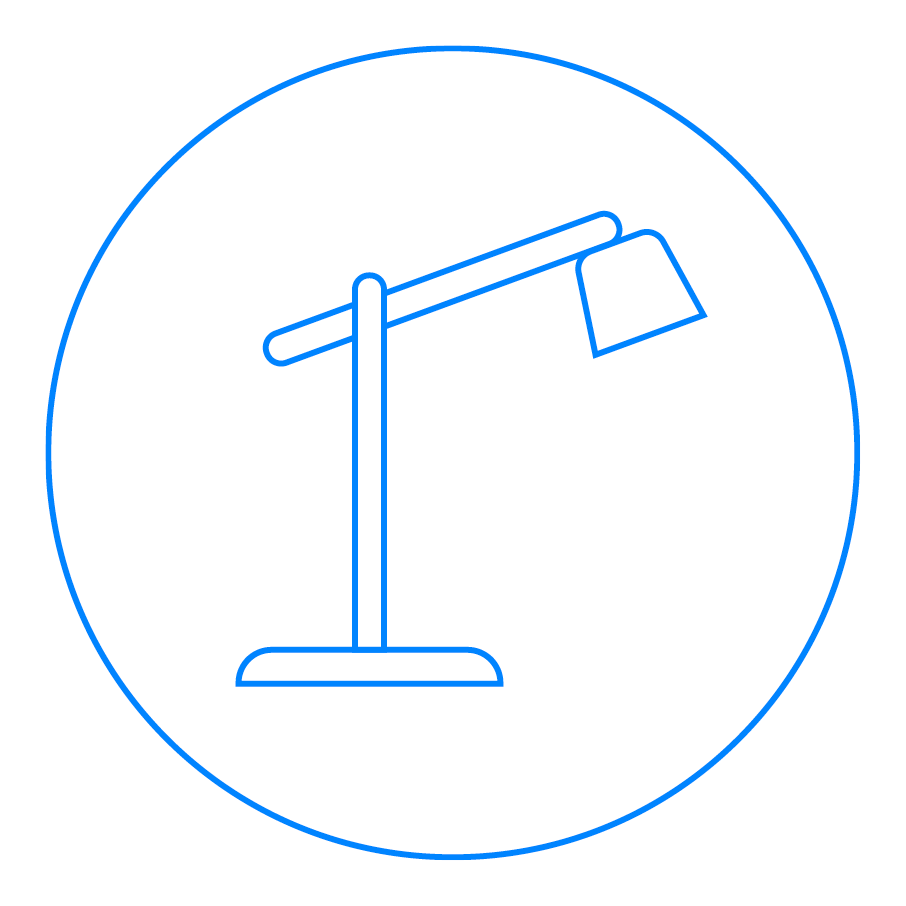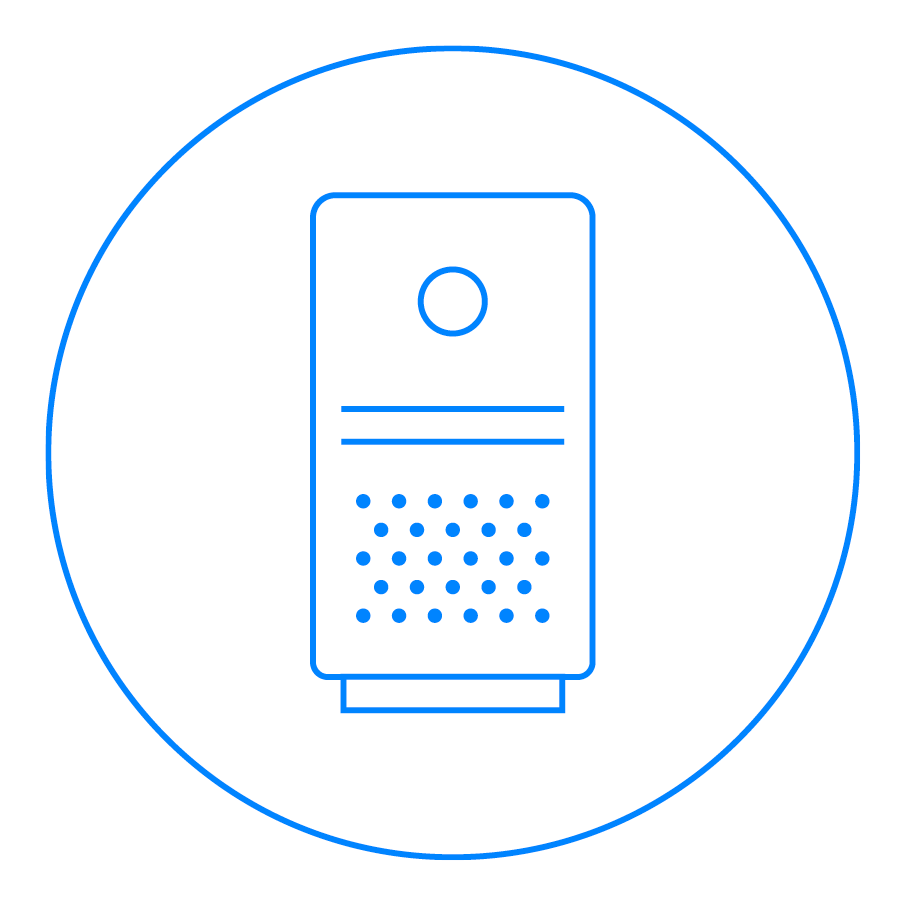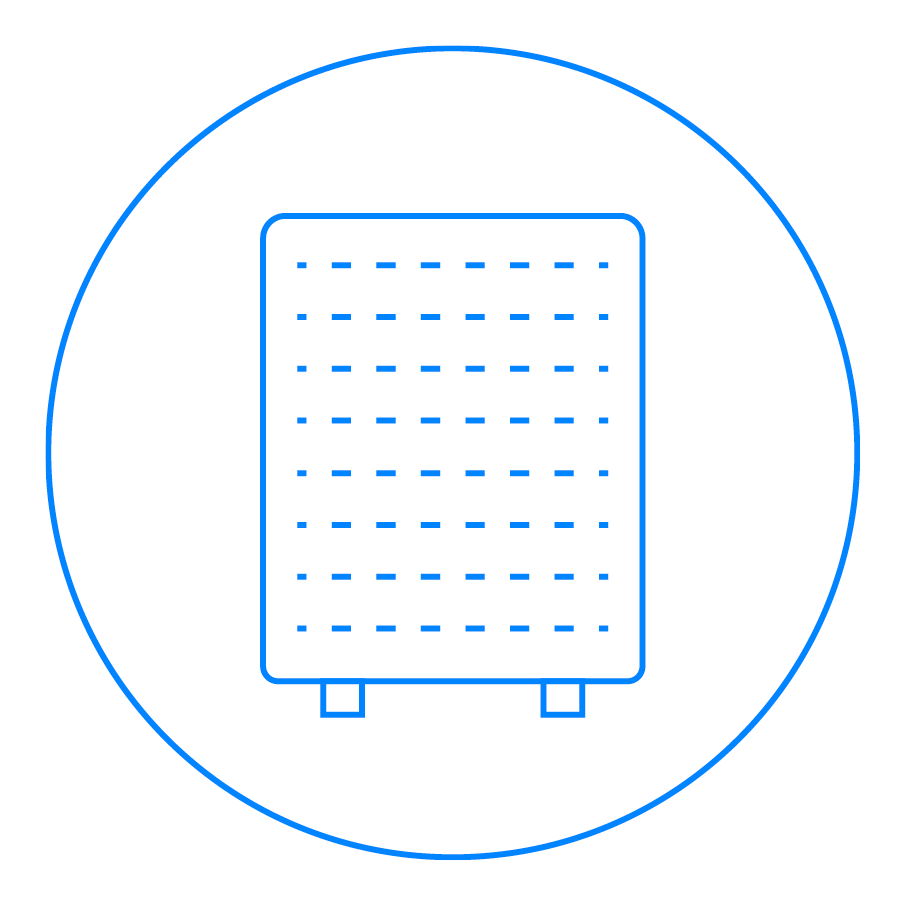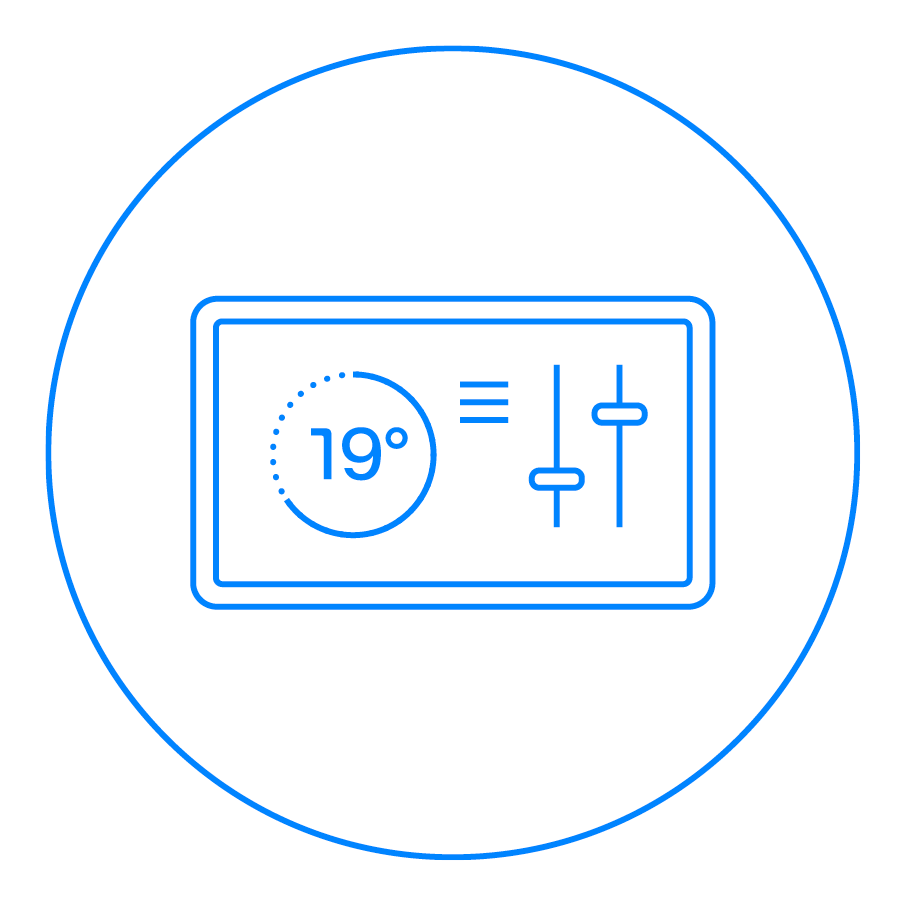A new world of work
From modern offices to industrial manufacturing – automated and optimised workplace environments have impacts not just on efficiency but on employee satisfaction and health too. Advanced technologies in the areas of lighting, air quality, acoustics and temperature open up new possibilities here. Customised potting compounds, adhesives and sealants from Wevo make a vital contribution to their durability and help integrate smart features.
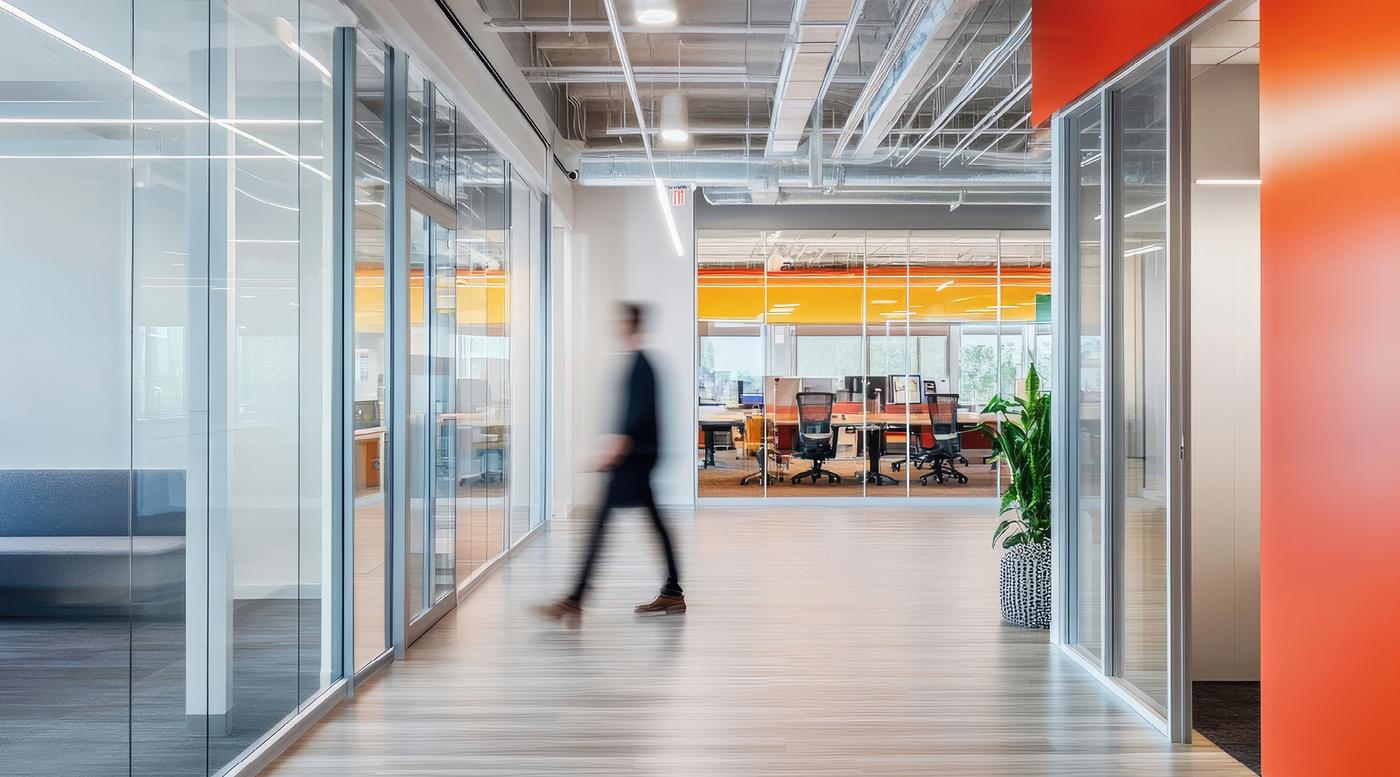
The way we work has changed fundamentally over the last few years. The Covid-19 pandemic accelerated digital transformation and established working from home as normal practice at many companies. At the same time, a new generation of workers are placing higher demands on the environment in which they work. In today’s highly competitive labour market, modern workplace design is turning into a decisive factor: it must inspire, motivate and bring corporate culture to life. Innovative concepts enable businesses to create spaces that enhance productivity and promote well-being in a sustainable way.
Lighting
Optimum lighting results from the interplay of various factors – first and foremost, the right balance between daylight on the one hand and direct or indirect lighting on the other. One key parameter here is illuminance, measured in lux. In Germany, the Technical Rules for Workplaces issued by the Federal Institute for Occupational Safety and Health (BAuA) define required lighting levels, with 500 lux being the minimum for office workplaces.
Numerous research projects have shown that not only brightness but also colour temperature has positive effects on employees. A 2023 study by a team from Switzerland and the UK, for example – albeit not representative – describes a correlation between higher colour temperature and increased cognitive performance.
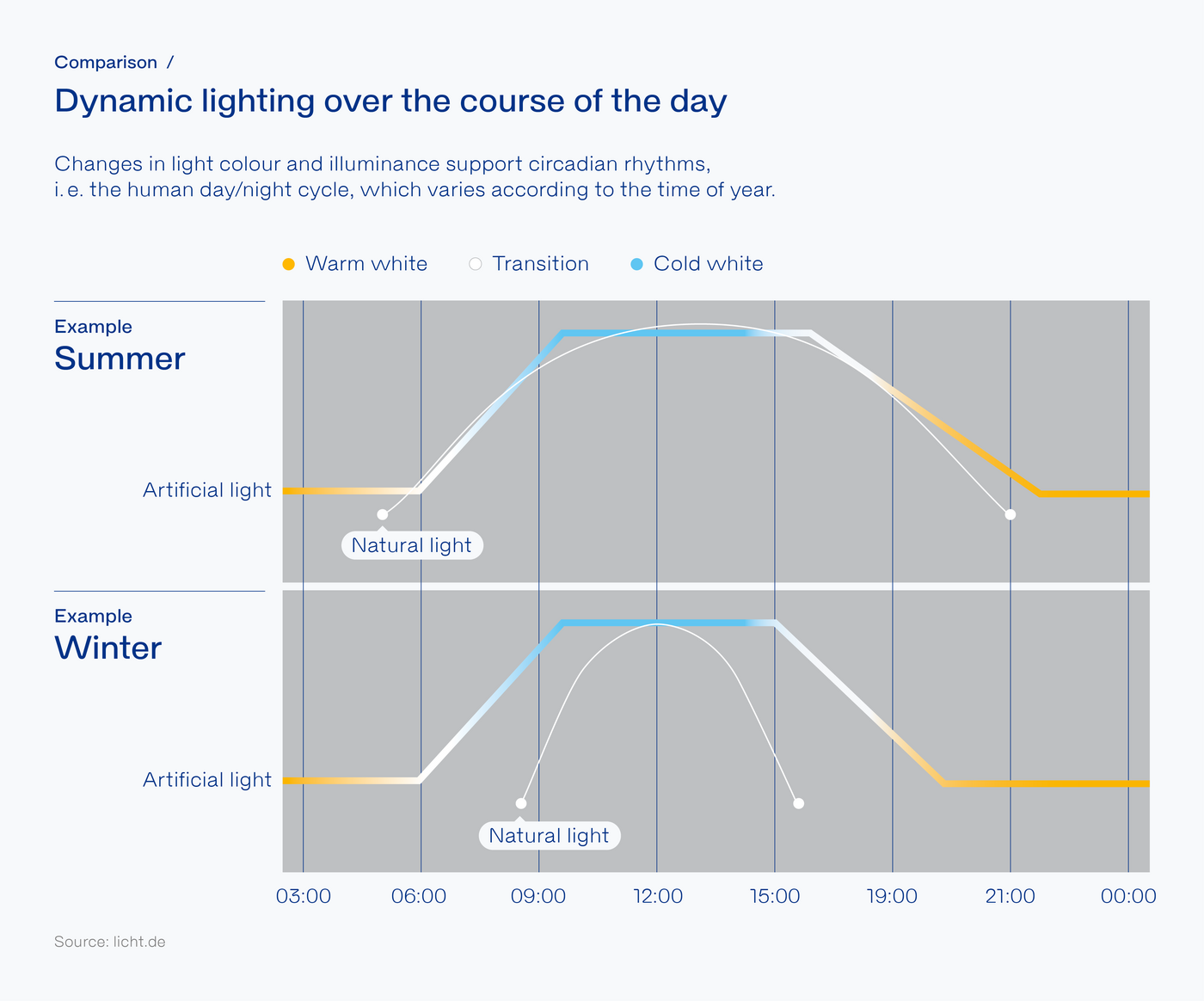
New solutions through human-centric lighting
Ideal workplace lighting should above all take account of individual needs – and how these change in the course of the day. Conventional lighting systems quickly reach their limits here. This is where human-centric lighting (HCL) comes in: smart, precisely controllable lighting concepts make people their number one priority. Modern sensor technology, among other things, makes this possible.
Many companies have already tapped into the market for intelligent lighting solutions, launching innovative products designed specifically for office environments. ams OSRAM from Austria and Signify from the Netherlands are just two of the big players here. Their LEDs and technologies – spectral and ambient light sensors, for instance – create a pleasant atmosphere and adapt automatically to individual biorhythms. These features often entail integrating additional electronic components into the luminaires. Special polyurethane and silicone electro casting resins from Wevo provide solutions to do this. Depending on the requirements, these materials offer targeted protection against environmental influences, for example, or efficient heat dissipation.
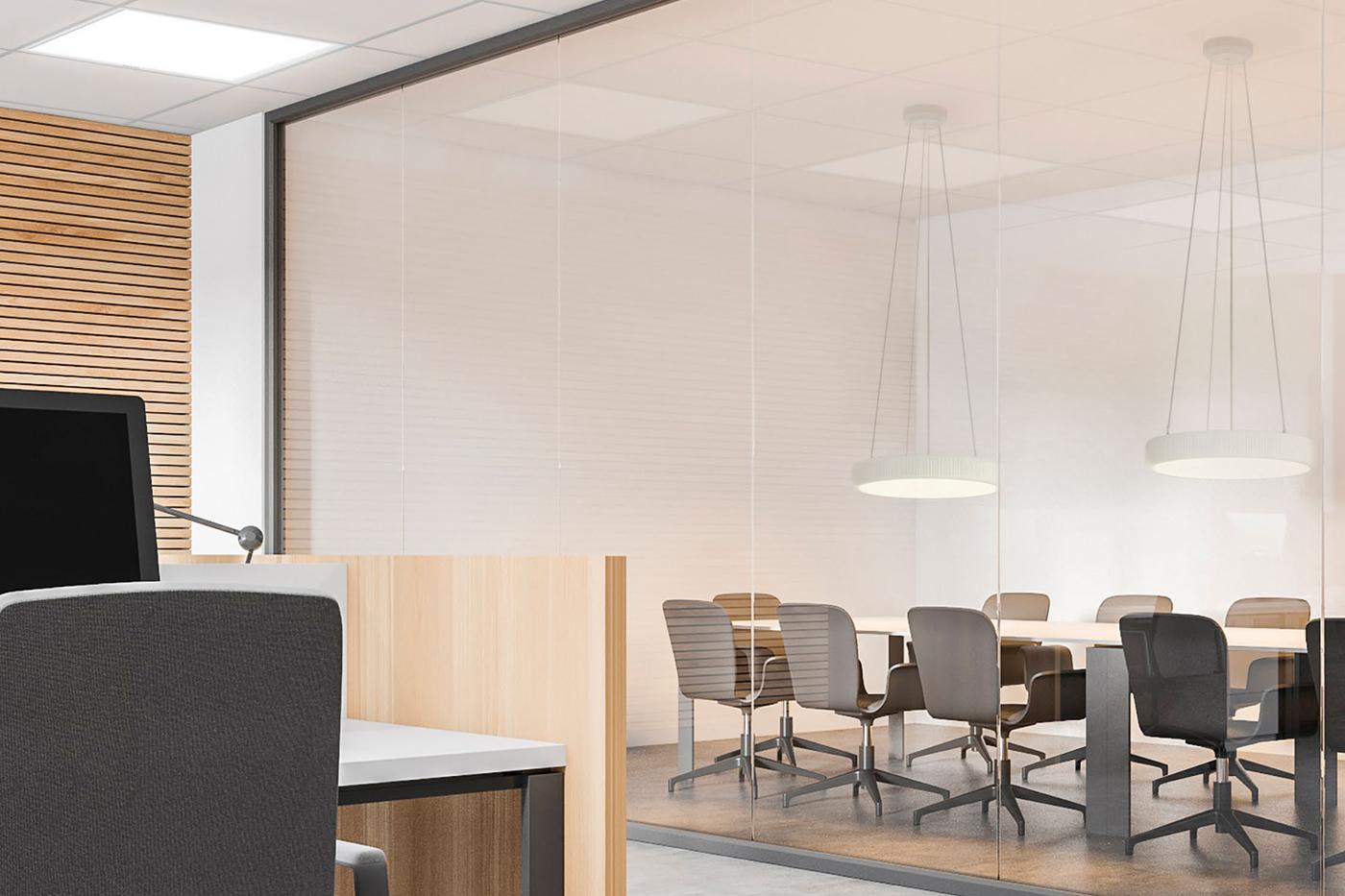
An interesting approach when it comes to innovative lighting solutions is followed by the Dutch start-up SunLED – with its SunBooster, which is designed to compensate for office workers’ lack of sunlight. The device is attached to a computer screen and works with three special LEDs that irradiate the user with near-infrared light (NIR) at a wavelength of 850 nm. NIR is invisible to the human eye, but according to SunLED it provides multiple benefits, including improved mood and enhanced physical performance. The SunBooster is due to be launched in the market at the end of 2025. In the long term, the start-up plans to integrate its technology directly into lamps, vehicles and laptop screens.
Ventilation
Harvard professor Joseph G. Allen sums up the advantages of smart air filter solutions as follows: they identify areas where overall air quality still needs to be improved, while simultaneously monitoring and adapting filtration settings in real time. The result: a more stable indoor air quality that can support employee productivity and help reduce sickness-related absences. Allen makes a clear appeal: “It’s time for companies to monitor workplace air quality”.
Air quality systems protect people and machines effectively from pollutants such as volatile organic compounds (VOCs), vapours, metal dust or oil mist. As the technical complexity of the filtration systems increases, so do the requirements: for instance, the heat generated by motors is becoming more and more relevant alongside ambient conditions. Two-component potting compounds from Wevo can be customised for specific applications, providing targeted protection and assuring long-term functionality.
In addition to modern hardware, smart software is playing an increasingly important role in air filtration. Mann+Hummel, based in Ludwigsburg, Germany, is a good case in point here. With a turnover of 4.7 billion euros in 2023, the company ranks among the global market leaders. Digital tools support customers in monitoring air quality in real time and make processes more efficient through predictive maintenance. With its i2M (“Innovation to Market”) subsidiary, Mann+Hummel is also driving the development of data-based solutions to accelerate the rollout of new innovations.
Optimised indoor air for offices
Covid-19 prompted a far greater awareness of air quality in office environments. The importance of this goes beyond just viral aerosols, as figures from the US Environmental Protection Agency (EPA) show: indoor air pollution levels can be two to five times higher than those outdoors.
Well-known manufacturers like Panasonic and Honeywell sell innovative solutions to improve air quality. These range from mobile air filters and ceiling-mounted systems to upgrade options for existing air conditioning equipment.
The Finnish Naava Group has come up with sensor-controlled, AI-driven green walls that act as built-in air purifiers and humidifiers. Lighting and watering of the plants are fully automated. Furthermore, various indoor air parameters are continuously monitored and combined with information gathered from weather satellites to ensure an optimum indoor climate. An app allows the plants’ condition to be observed and adjustments made accordingly.
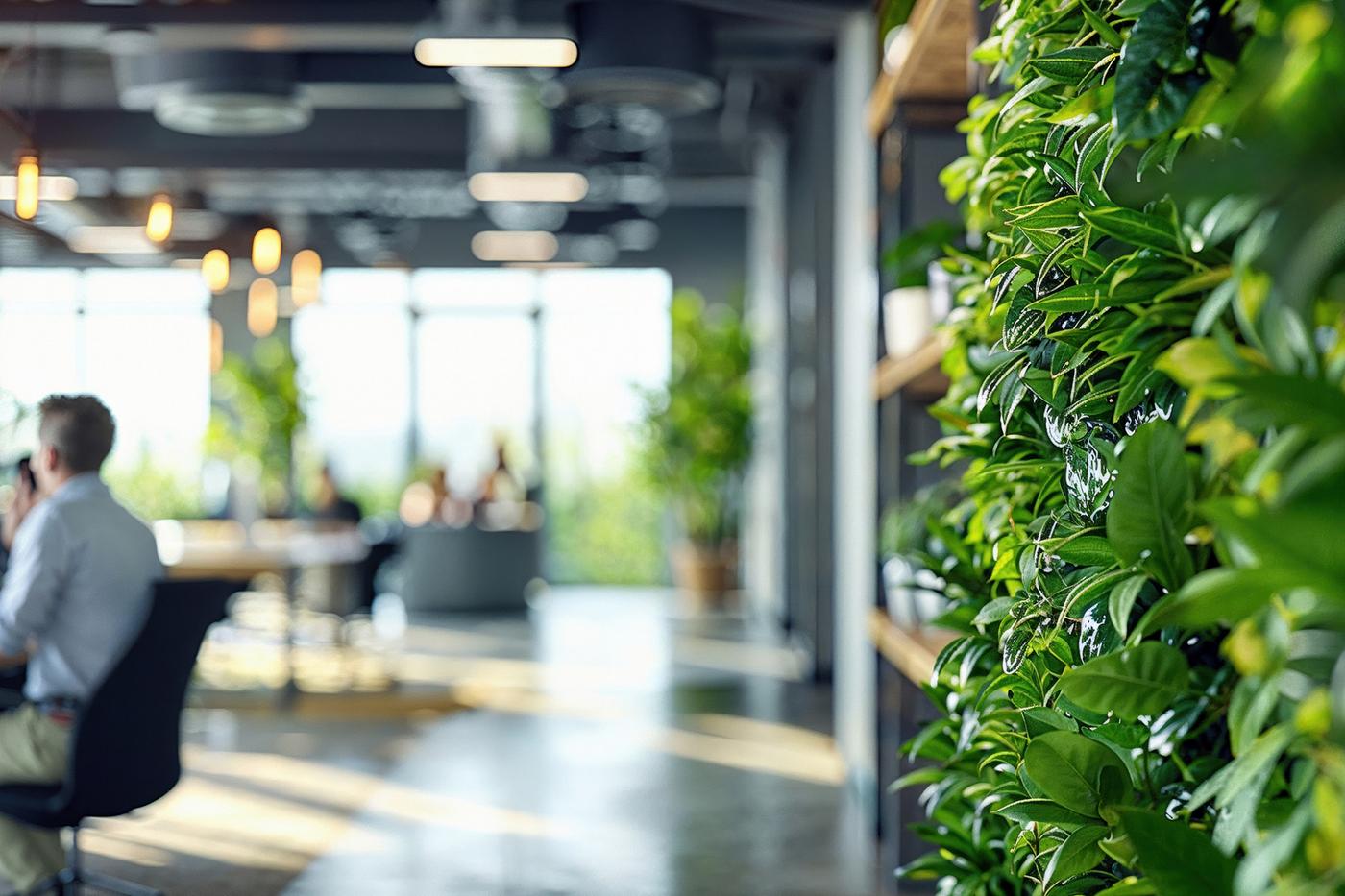
Acoustics
A number of solutions also exist for acoustics in the workplace from specialised providers. Sound-absorbing materials and systems are already standard in many offices today. In spite of such measures, however, it is not uncommon for other people’s conversations to still be a disruptive factor.
One reason for this is the so-called Lombard effect – the involuntary tendency to speak louder in order to be heard and understood in a noisy environment. This can trigger a genuine chain reaction in open-plan offices, where several conversations frequently take place at once.
At this point, so-called sound masking comes into play: a technique in which conversations are overlaid with a targeted background noise. This sound is generated by speaker systems at a frequency similar to human speech, yet remaining barely perceptible. woodtech GmbH, a manufacturer of systems for the acoustic and functional optimisation of office environments, describes the effect vividly: “Even the background noise of a busy beach fades into the steady sound of the surf. You can relax with a book – or even fall asleep.”
Adaptive sound masking for workplace acoustics
Sound masking in the workplace ensures that conversations in the immediate vicinity remain intelligible while those farther away become increasingly difficult to understand – and hence less distracting. Adaptive sound masking goes a step further: modern sensors and digital signal processing automatically adapt background noise to the current soundscape. The scores of electronic components that are needed for such technologies must be reliably protected against environmental influences, mechanically stabilised and the thermal load reduced – all tasks performed by Wevo’s customised potting compounds, adhesives and sealants.
As part of a non-representative study by Eindhoven University of Technology, an adaptive sound masking system was installed at two organisations for a period of two months without the employees concerned being informed about it. The findings of the before-and-after surveys showed clear benefits: raising the background noise level by between 10 and 13 dB(A) to around 42 dB(A) significantly reduced distraction due to intelligible speech. Noise-cancelling headphones, for example, were resorted to less frequently as a result. Positive effects were additionally observed when it came to short-term mental health aspects.
However, stress is caused not only by working environments that are too noisy but also by ones that are too quiet. This was proven by a study conducted at the University of Arizona. “Everybody knows that loud noise is stressful. But what was new about this is that with even low levels of sound – less than 50 decibels – the stress response is higher”, explains Esther Sternberg, the study’s co-author and Director of the Institute on Place, Wellbeing & Performance. The ideal noise level for focused work is therefore around 50 decibels – comparable to birdsong or moderate rain.
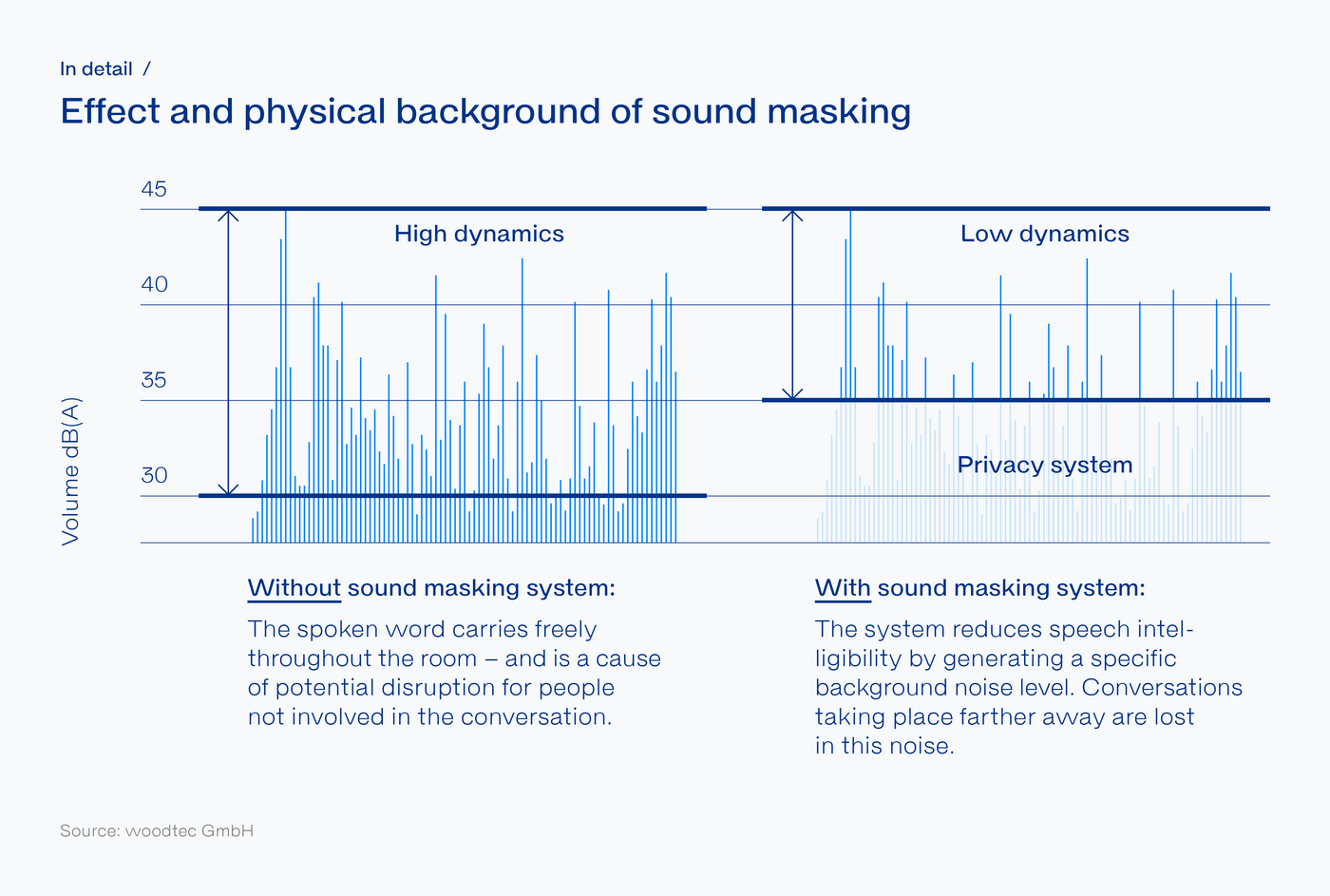
Temperature
When it comes to thermal indoor climate – comprised of temperature, humidity, air velocity and radiant heat – the BAuA has established that deviations from optimal conditions can lead to consequences such as discomfort, reduced performance or health issues. A recent study from Switzerland further confirms that the risk of accidents increases significantly at extreme temperatures above 30 °C. As a result, intelligent climate control solutions are evolving from mere comfort factors into strategic tools for employers.
At the same time, the integration of smart features like weather-responsive adjustments is emerging as one of the key drivers of progress in A/C technology. Draught-free air conditioning systems are similarly gaining in importance. Energy efficiency and user comfort further add to their attractiveness for both businesses and consumers. Wevo materials based on polyurethane, epoxy and silicone contribute decisively to the high durability of these sensitive components, for instance with their heat-conducting properties and their ability to dampen mechanical stresses such as vibration or shocks effectively.
Daikin Industries, Ltd., based in Osaka (Japan), is a major player in the global HVAC (heating, ventilation, air conditioning) market. The company achieved record turnover of 28 billion euros in the 2023 financial year. This was partly due to sales figures in the field of energy-efficient cooling solutions for commercial buildings, specifically offices, hotels and retail properties. Bosch Thermotechnology and Mitsubishi Electric are other important manufacturers in this segment.
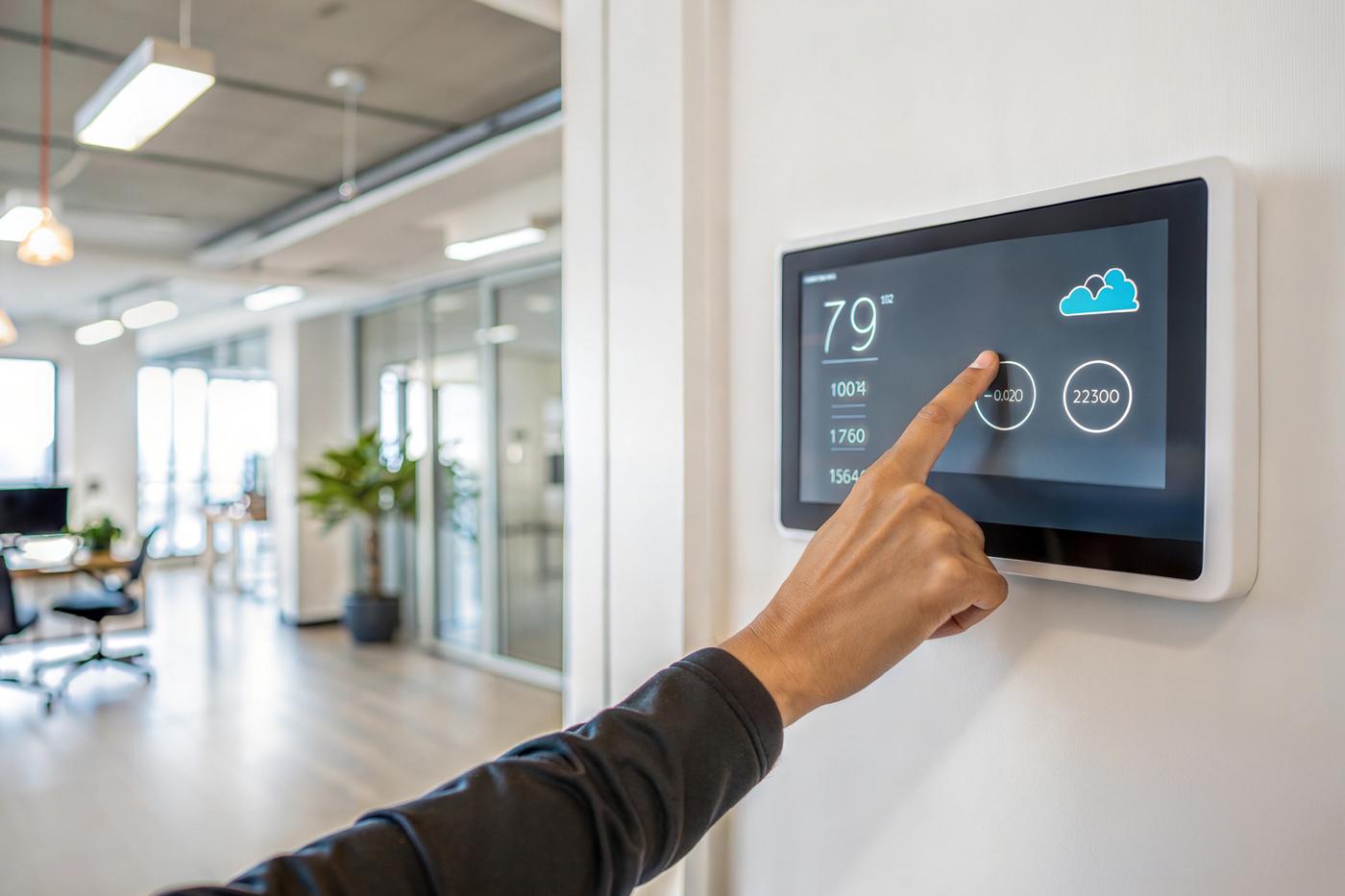
The working world of tomorrow
Modern, flexible workplaces lay the foundation for a productive, efficient and healthy environment. Lighting, air quality, acoustics and temperature are paramount here. Smart technologies to optimise these factors can likewise help to make an employer more attractive.
Even in the growing area of tension between economic pressure, rapidly advancing technology and rising employee expectations, such investments pay off. The “Human Capital Trends 2025” study by consulting company Deloitte highlights that organisations which strategically invest in a well-balanced relationship between people, technology and organisational structure achieve greater success in the long term.
In short, the ability to individualise and automate working environments will be key to the future of the working world.
Image sources: Irfan (stock.adobe.com), Signify GmbH, oksa_studio (stock.adobe.com), pisan thailand (stock.adobe.com)
Links related to this article
Studies:
Human Capital Trends 2025
Lighting color temperature impacts effort-related cardiovascular response to an auditory short-term memory task
Level-adaptive sound masking in the open-plan office: How does it influence noise distraction, coping, and mental health?
Companies/research institutes:
ams OSRAM
Bosch
Daikin
Honeywell
Mann+Hummel
Mitsubishi Electric
Naava
Panasonic
Signify
SunLED
Persons:
Esther Sternberg, Joseph G. Allen
Disclaimer (Extract) – Copyright and IP Rights: The contents published on this website are subject to German copyright and ancillary copyright law. Any utilization not permitted by German copyright and ancillary copyright law requires the prior written permission by the provider or the respective owner. This applies in particular to the copying, working, translation, storage, processing and reproduction of contents in databases and other electronic media and systems. Third-party contents and rights are identified as such in this regard. The unauthorised duplication and forwarding of individual contents or complete pages is not permitted and may possibly be punishable as a criminal offence. Only the creation of copies and downloads for personal and private and non-commercial use is permitted. The use of this website as external link shall only be permitted upon prior written approval oft he provider. Each and any firm or trademark is sole property of the relevant company. Citations of trademarks and names of third parties have a purely informative character. You will find the complete disclaimer in the imprint.
